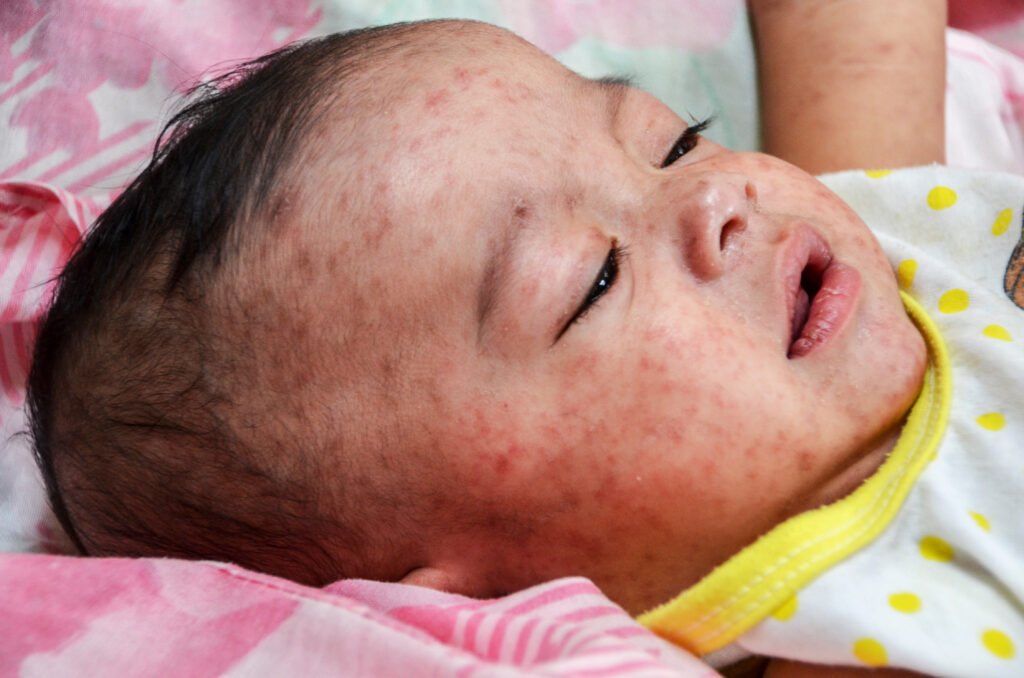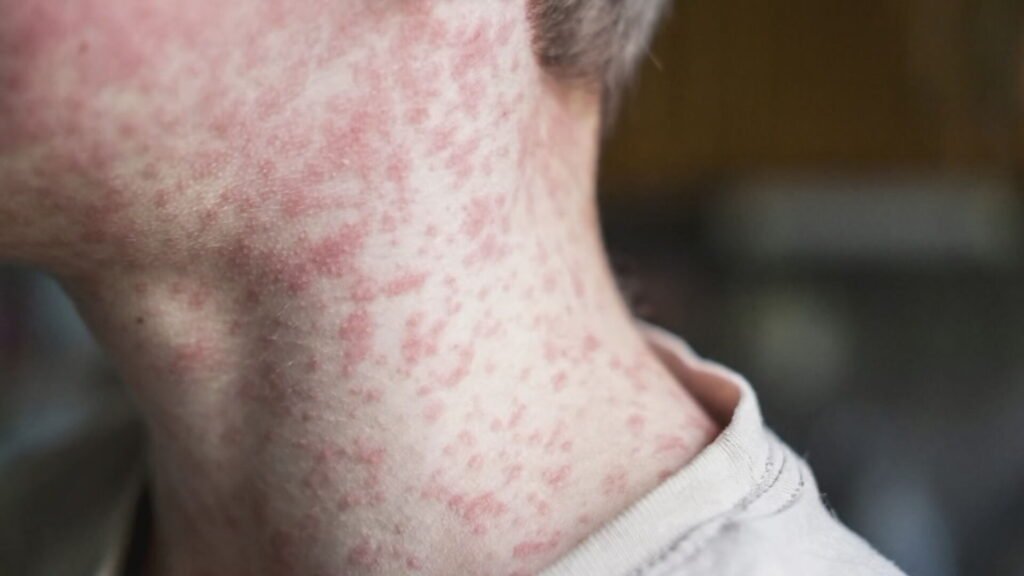Introduction
Measles cases in the United States have reached record levels, marking the highest number of infections since the disease was officially declared eliminated. The surge is raising concerns among public health officials, pediatricians, and parents nationwide. Measles is a highly contagious viral illness that can cause serious complications, particularly in children and those with weakened immune systems. Understanding the symptoms, transmission, and preventive measures is crucial for controlling the outbreak and protecting vulnerable populations.
What is Measles?
Measles is a viral infection caused by the measles virus, a member of the paramyxovirus family. The virus spreads through respiratory droplets when an infected person coughs or sneezes. Because it is highly contagious, measles can quickly infect unvaccinated individuals, particularly in communities with low vaccination coverage. Symptoms typically appear 7–14 days after exposure and include high fever, cough, runny nose, red eyes, and a characteristic red rash that spreads across the body.
Symptoms of Measles
Recognizing early measles symptoms is essential for timely medical care and preventing further transmission. The initial symptoms often mimic a common cold, including fever, cough, nasal congestion, and fatigue. Red, watery eyes are another hallmark feature. Within a few days, a rash typically appears, beginning on the face and spreading downward. In severe cases, complications such as pneumonia, encephalitis, or hospitalization may occur, particularly in young children and immunocompromised individuals.

Causes of the Recent Measles Surge
The current spike in cases is largely attributed to gaps in vaccination coverage. Public health experts point to vaccine hesitancy, misinformation, and disruptions to routine immunizations during the COVID-19 pandemic as key contributing factors. Travel to regions where measles is endemic can also introduce the virus into communities with low immunity, leading to outbreaks. https://www.who.int/news-room/fact-sheets/detail/measles
How Measles Spreads
Measles is one of the most contagious viruses known. It spreads primarily through droplets in the air when an infected person coughs or sneezes. The virus can linger on surfaces for several hours, meaning people can become infected even after contact with contaminated objects. This high transmissibility underscores the importance of vaccination and early identification of cases to prevent community spread.
Vaccination and Prevention
The most effective way to prevent measles is through vaccination. The MMR (measles, mumps, rubella) vaccine provides long-lasting immunity and is typically administered in two doses during childhood. Ensuring high vaccination coverage is critical for achieving herd immunity, measles outbreak which protects those who cannot be vaccinated due to medical reasons. Public health campaigns also emphasize hygiene measures, such as handwashing, isolating infected individuals, and avoiding contact with vulnerable populations during outbreaks.
Complications of Measles
While many children recover fully from measles, severe complications can occur. These include ear infections, diarrhea, pneumonia, and encephalitis, which can lead to long-term neurological damage or death. Infants, pregnant women, and immunocompromised individuals are particularly at risk. Prompt medical care, supportive treatments, and monitoring are essential to reduce the severity of these complications.

Public Health Response
Health authorities are closely monitoring the measles outbreak and working to contain it. Measures include increasing public awareness, providing catch-up vaccination campaigns, and tracking infection clusters. Schools and community organizations are also involved in ensuring children receive recommended immunizations to prevent further spread.
Conclusion
The surge in measles cases in the United States highlights the ongoing importance of vaccination, early detection, and public awareness. Parents, caregivers, and healthcare providers must remain vigilant in recognizing symptoms, ensuring timely vaccinations, and following public health guidelines. By maintaining high vaccination coverage and adopting preventive measures, measles outbreak communities can reduce the risk of further outbreaks and protect vulnerable populations from this highly contagious disease.




